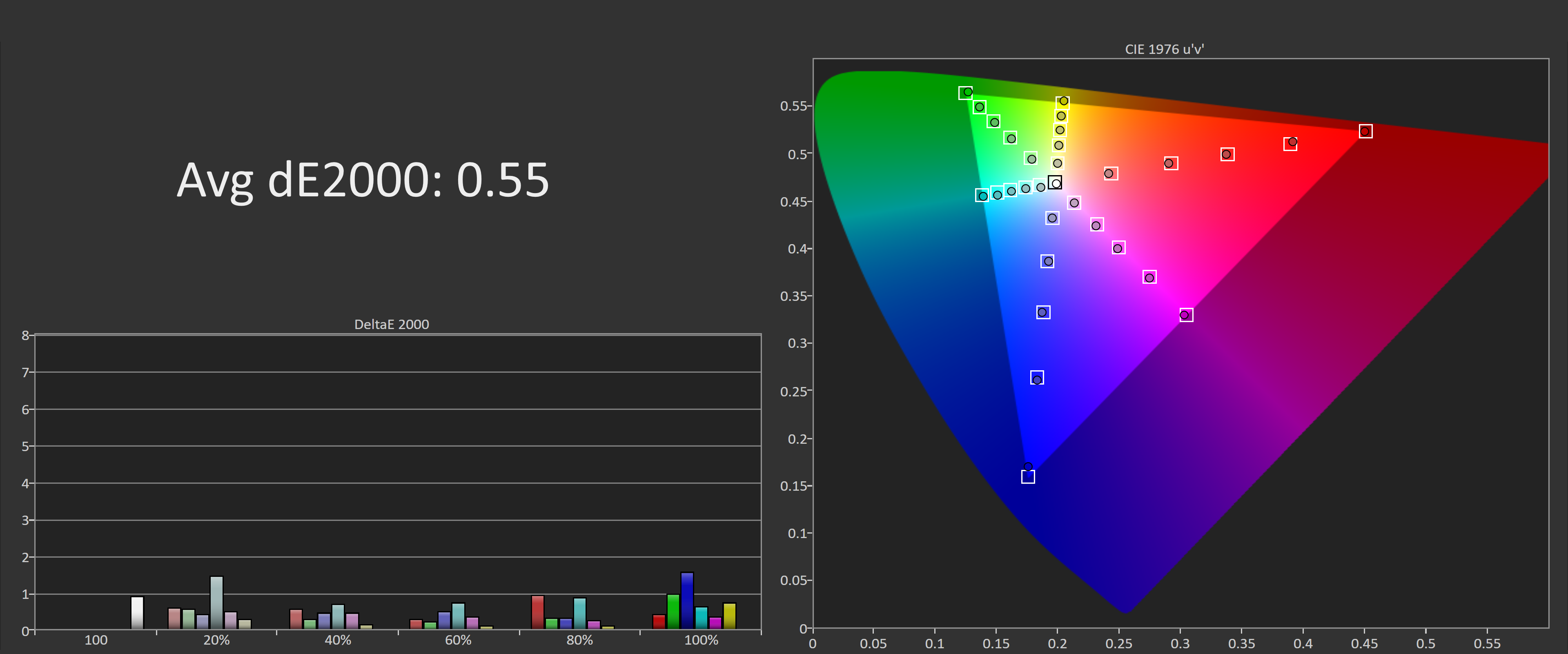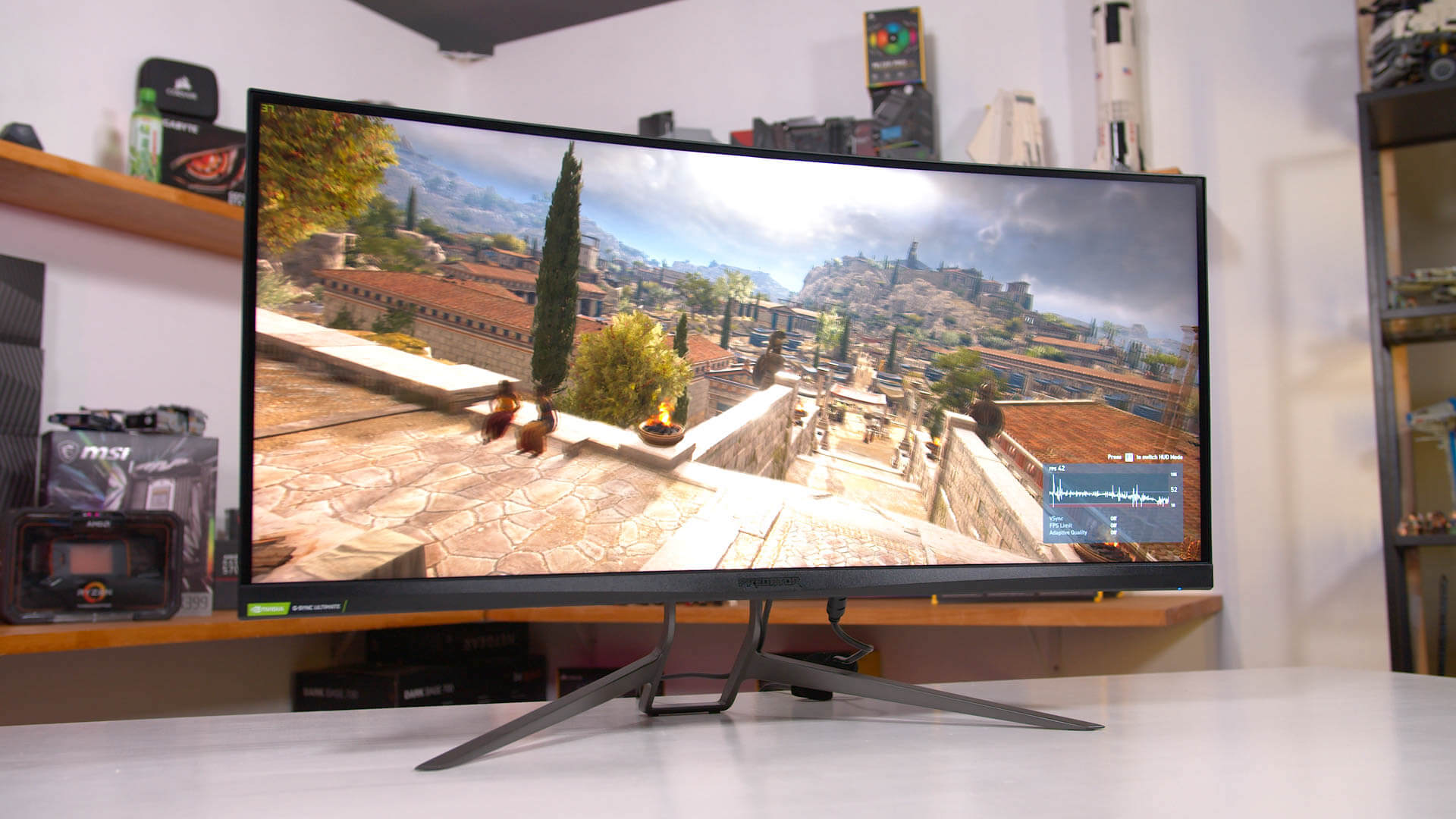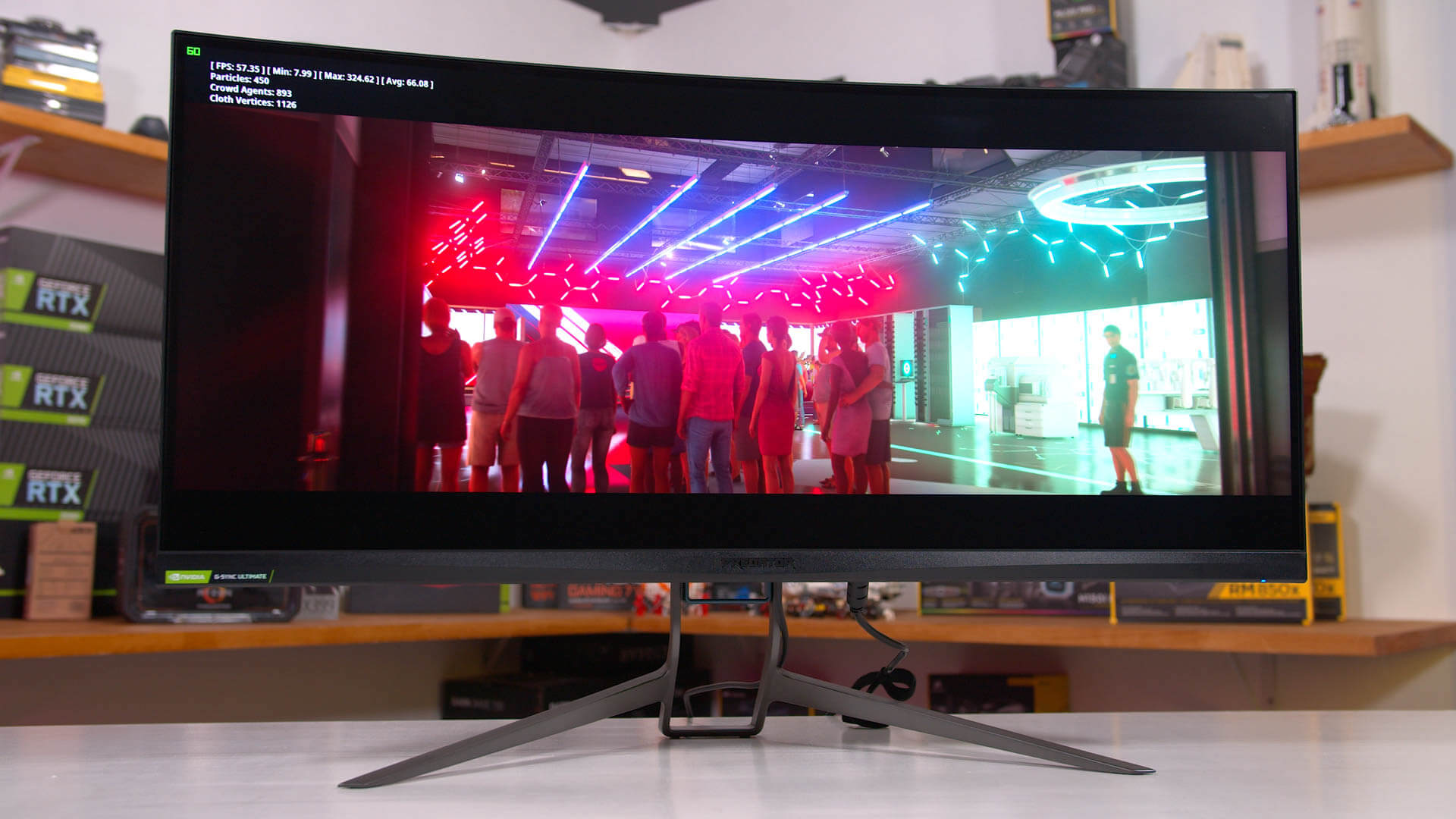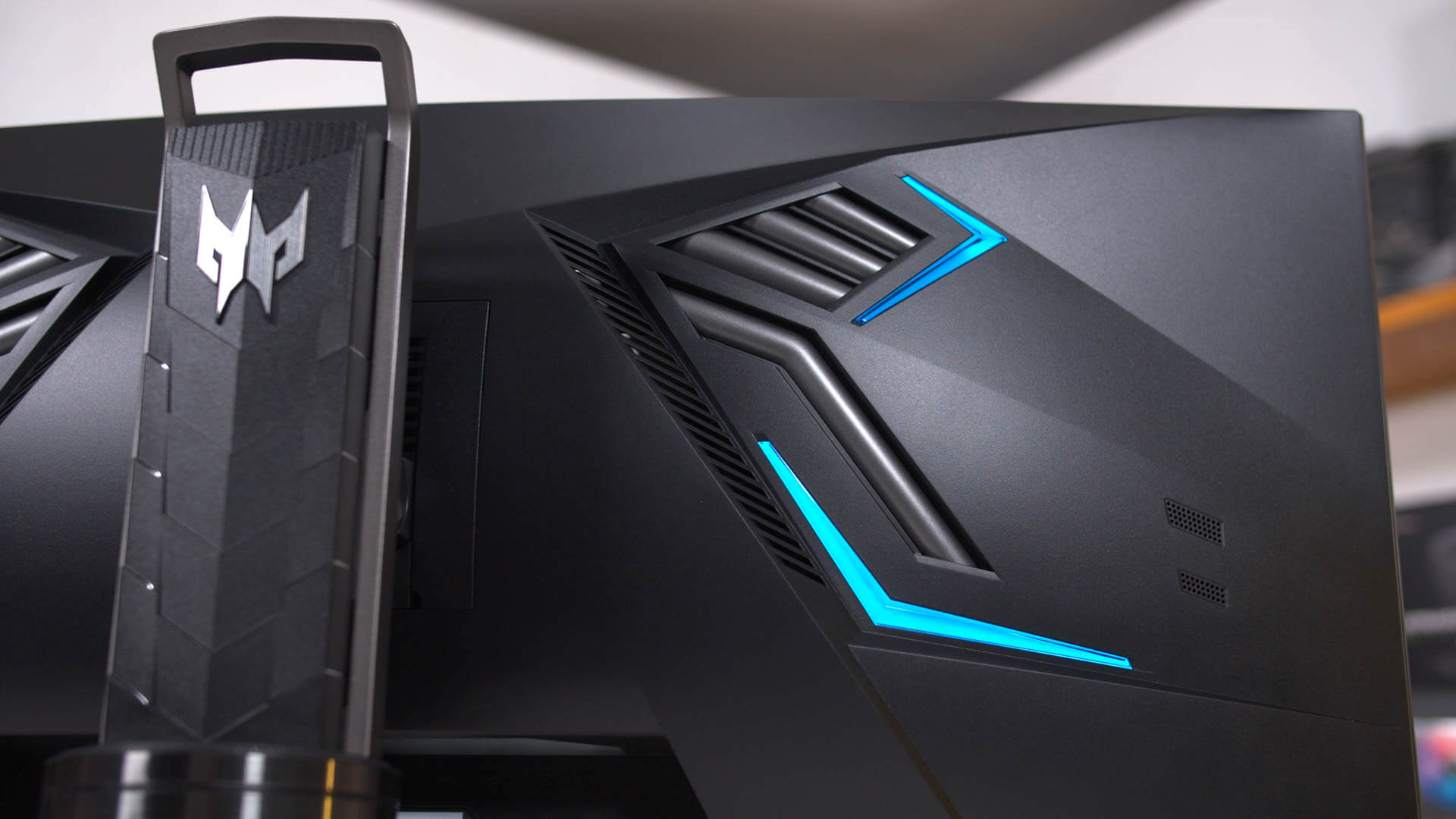Recently we reviewed the Asus ROG Swift PG35VQ, a monstrous 3440 x 1440 ultrawide with a massive 200 Hz refresh rate and proper HDR support. We weren't afraid to call it the best monitor we have ever tested. Well, as many keen monitor fans would know, Acer has their own version of this display, the Acer Predator X35, and today we'll be putting it head to head against the PG35VQ to see how it stacks up.
As expected the Predator X35 packs the same specs as the PG35VQ because it uses the same panel. It's a 35-inch 3440 x 1440 VA panel with up to a 200 Hz refresh rate, 1800R curvature and G-Sync Ultimate support.
It's a true HDR monitor as well, with DisplayHDR 1000 certification and a 512-zone full array local dimming backlight. Pricing is also similar: both are expected to cost around $2,500 when they go on sale since neither is widely available yet.
With that sort of price tag, this monitor isn't going to be for everyone. In fact there are places like in Australia where it costs considerably more, with an MSRP of $4,000 this thing costs more than a high-end LG OLED TV.
Without doubt manufacturers are setting a high bar for true HDR in a monitor form factor. Given you'll need an RTX 2080 Ti to make full use of the high refresh capabilities on a panel like this, we imagine this is the sort of equipment only high rollers will end up buying. But hopefully what we go through today will show where monitors are headed in the next few years.
For the design, both Acer and Asus are fairly heavy on the gamer style. If you've read any of our past reviews you'll know we favor more subtle looks, but there will be some people that are more keen on huge RGB zones that you can't even see from the front. We have a slight preference for Acer's X35 design over the PG35VQ but they are not overly different: both use black plastic, both have similar bezels, both have metal stands, both pack height, tilt and swivel adjustment; both are equally well made.
The array of ports is typical for a G-Sync monitor: a single HDMI and single DisplayPort input, plus some USB ports. That's it. There are no audio jacks, although the X35 packs some lousy built-in speakers.
The on screen display is controlled through a directional toggle. It also has the standard range of Acer features, including cheat crosshairs, a low blue light mode, and a dark boosting mode. Like a few other monitors we've reviewed recently, there is no backlight strobing mode for added clarity, presumably that was too hard to get working with an FALD backlight.
One glaring issue with the X35 is the active cooling fan. This has been a feature of all G-Sync Ultimate HDR monitors so far, to varying degrees of success. While the fan isn't very noticeable in the Asus PG35VQ, for some reason Acer has decided that pulsing the fan between a slow and fast speed is the best course of action. This means that from time to time, the fan will suddenly engage; in a quiet room, it sounds like a vacuum cleaner has just been turned on.
We don't know why Acer has chosen this fan profile over one that gradually ramps up and down as necessary. The PG35VQ and even Acer's previous X27 weren't as obnoxious as this. Luckily, if there's any sort of game audio or other sounds playing, you probably won't hear the fan spinning up as it's not overly loud, but in a quiet room I found it really annoying. Hopefully this is something Acer can fix via a firmware update.
Performance
Response Times / Overdrive Modes
Moving into performance, we'll start by looking at response times. The monitor has three overdrive modes, the default being Normal at a maximum 200 Hz refresh rate. Couple of interesting things to note here. Dark level performance is really good for a VA panel, only the transitions from full black suffer from slow response times, basically everything else is very quick, which leads to a dark level average of 8.48ms. Most other VAs will have sub-40% grey transitions run well over 10ms, but what we're seeing from the X35 in this mode is more akin to an IPS panel, which also tend to have weak performance transitioning from full black.
The overall grey to grey average is 4.27ms, very similar to the Asus PG35VQ, and this means that we are getting a true 200 Hz experience. However error rates are a little high for my liking, an average error of 9% and crucially, 20% of transitions having an error rate above 15% says that you may notice inverse ghosting at times. We like to see monitors have fewer than 15% of transitions with errors above 15%, per my 15-15 rule, but the X35 is a little above that here. Not the worst performance, not the best.
Unfortunately, there isn't a better mode than 'Normal' for 200Hz gaming. Extreme takes the monitor to a 2.72ms grey to grey average and all but eliminates dark level smearing, but introduces severe inverse ghosting. And on the opposite end of the scale, switching overdrive off leads to no errors, but a 12.26ms grey to grey average with high levels of dark level smearing. Even though the X35 fails the 15-15 rule in the Normal mode, we feel it's the best balance of the three for gaming.
While we haven't tested the PG35VQ under our new test suite, the results for grey to grey average between the X35 and PG35VQ are very similar in their optimal overdrive modes. This isn't a surprise as they both use the same panel. But what you can see here is the X35 performs well, especially for a VA panel in terms of response times and refresh rate compliance. However again you can see here that the error performance is weak.


It's crucial to note that the monitor does perform differently with the FALD backlight enabled. With a dynamic backlight at play, we now have two elements controlling response: both the liquid crystals and the LED backlights. So we get some pretty funky response time charts here with numbers that are all over the place.
My recommendation when using the FALD backlight is to move from using the Normal to Extreme overdrive modes. The results here aren't amazing with some particularly slow transitions - it's hard to get the backlight and crystals to transition well in tandem - but this is the best balance between performance and error rate. Surprisingly, there is nearly no inverse ghosting or dark level smearing when using Extreme + FALD, but that's come at the expense of smearing in other areas.
The Extreme overdrive mode is also my recommendation for 60 Hz gaming. The grey to grey average here is higher, at 6.30ms rather than 4.27ms like we saw using Normal at 200Hz, but it's still decent for 60 Hz.
Input latency is okay without blowing me away, 8.23ms is a bit faster than Acer's previous X34 monitor, but still indicates around 5ms of processing lag, helped by the faster refresh rate. Interestingly, if you turn on the FALD backlight, input latency increases by around 4ms, presumably that's due to the additional processing that's needed to figure out what the FALD backlight should do.

Power consumption is also interesting. This monitor uses a lot more power than other ultrawides of a similar size, even when displaying the same brightness. The FALD backlight isn't a particularly efficient way of illuminating an LCD, consuming 20W more than non-FALD options.

One of the key differences between the PG35VQ and Acer's Predator is their color performance. Asus has done a decent job of factory calibrating their offering, while Acer has kinda dropped the ball a bit here with the X35. This is a flip of the situation with the 27-inch G-Sync Ultimate montiors, where we found the X27 was better than the PG27UQ.
Default Color Performance
Here we have greyscale performance. The CCT curve hurts performance, while it does follow the sRGB gamma curve well, a deltaE average of 3.16 is worse than the 2.37 we get with the PG35VQ out of the box. Saturation performance is also not as good as the PG35VQ, and that's down to a key difference in default configurations: Asus clamps their monitor to sRGB in the SDR mode by default, while Acer leaves their monitor unclamped. So Asus manages to hit a sub-2.0 deltaE in our ColorChecker tests out of the box, while Acer is above 2.0.



However default configurations are probably not what many users will actually use. So for the Acer X35 we'd recommend using the sRGB SDR mode and tweaking a few other things (see below). The X35 disables the FALD backlight by default in the SDR mode which we feel is the right move to prevent haloing in desktop apps, while on the PG35VQ it's enabled by default.
Acer X35 optimal settings: Brightness (200 nits) 38, Relative Gamma: Default, Dynamic Backlight: Off, Contrast: 50, sRGB SDR: On, Color: R94, G100, B98, Overdrive: Normal. All other settings default.
Unfortunately these tweaks can't resolve the issues with the CCT curve, so greyscale performance is weak, especially compared to the PG35VQ which when tweaked hits a sub-1.0 deltaE average. But saturation performance is improved, now with a deltaE average of 1.57, and ColorChecker is decent, falling just above a 2.0 deltaE average. It's not perfect, but it will do for gaming.
OSD Tweaked Color Performance



Then of course we can perform a full calibration which resolves all the remaining issues, especially that CCT curve performance. You could even create multiple profiles, one for the monitor when sRGB clamped and another when not clamped, depending on your use case.
Calibrated Color Performance



The Predator X35 is a wide gamut monitor, touting 90% DCI-P3 coverage. Out of the box, we actually get sub-2.0 deltaE averages when measuring against D65-P3, simply because the monitor is left unclamped. However I wasn't able to improve performance through OSD tweaks, unlike with sRGB performance. Again, to get things up to standard you'll need to perform a full calibration which works well.
For SDR mode brightness, we get 480 nits when calibrated, right at the top of the charts. This is artificially limited of course, as the monitor can do well above that in the HDR mode as we'll see in a moment. Native contrast ratio is unimpressive at just 2100:1; basically the same as the PG35VQ and not nearly as high as some of the best VA panels we've tested. Luckily, we don't get much of a fall off when calibrated, so the default contrast ratio isn't much higher than what we just showed.


Native uniformity is good, the central zone is accurate relative to the center while with the outer edges there is a slight vignette, which isn't unusual to see from a curved VA panel. However, performance here is a bit weaker than the PG35VQ, at least when comparing our review units.

This is a fully HDR capable monitor, with DisplayHDR 1000 certification and a full array local dimming backlight with a decent zone count. All the stuff you see in this checklist is what you're paying $2,500 for, compared to lesser HDR monitors that are often several thousand dollars cheaper.

Brightness is excellent on this monitor. It achieves over 900 nits sustained in a full white window, which then increases to as high as 1100 nits for a 10% window with a slight fall off for smaller windows. The sustained performance of this panel is marginally better than the PG35VQ, as is the flash brightness: the X35 is capable of a 1140 nit full screen white flash, which melts your eyes. This thing is seriously bright.

For multi-frame contrast, the Acer Predator X35 is at the limits of our testing tools, because the FALD backlight essentially turns off the entire backlight when displaying a fully black frame. It's also at the limits in our best case single-frame contrast test, because again the local dimming backlight is very good at dimming dark areas. This is where the FALD backlight has a significant advantage over semi-HDR edge-lit panels, such as the MSI PS341WU.


In our worst case test, which measures a bright zone right next to a dark zone, we achieved around double the native contrast ratio. So far, this is the best result we've seen.

A lot of these great results are brought about by the FALD backlight with its 512 zones, which does a decent job of isolating bright areas and keeping dark areas really dark. This is how we get the spectacular HDR effect we're looking for. However, it's not perfect: we're still talking about zones that encompass thousands of pixels, so there will be haloing in some situations. This is mitigated somewhat by the VA panel, and we didn't spot much inverse haloing, but you'll definitely notice the backlight in action in desktop apps when, say, moving a bright mouse cursor over a dark area of an app.
The good news is that unlike with edge lit panels, you don't notice much haloing while gaming or playing back HDR video. The backlight is highly responsive and generally works really well in these use cases.
Wrap Up
Across all the tests, the Acer Predator X35 performs similarly to the Asus ROG PG35VQ which was to be expected given the similar specs, same panel and that both are aimed at the same crowd. In a lot of key areas, this means we're getting very good performance. The 3440 x 1440 panel is definitely 200 Hz capable with an average grey to grey response time below 4.5ms, dark level smearing is better than average, and while overshoot could be better controlled, the balance here is fine for gaming.
The Acer Predator X35 also delivers excellent HDR performance for gaming, thanks to its bright backlight and 512-zone full array.
If you want an ultrawide monitor that delivers a proper HDR experience in today's games - and the HDR gaming ecosystem is better than ever these days - this is the kind of monitor you want.
However there were a few crucial aspects in which the Predator X35 falls a little behind the Asus PG35VQ. The active fan is louder and ramps its fan speed in an annoying manner. The factory color performance isn't as good. When you're spending $2,500 on a monitor, we'd really expect a good level of out of the box accuracy. The PG35VQ delivers this, while the Acer X35 doesn't, and when we're talking about two monitors that are so similar, that's what it ends up boiling down to.
Bottom line, if you are tossing up which monitor to spend on $2,500 all things being equal, our nod goes to the Asus ROG PG35VQ right now. The Acer model is still pretty good – we're comparing it to the PG35VQ which is the top gaming monitor out there – but if you can get the Acer and not the Asus on your region, or the former is more affordable, then it's definitely worthy of your consideration.
Shopping Shortcuts:
- Acer Predator X35 on Amazon
- Asus ROG Swift PG35VQ on Amazon
- LG 34GK950F on Amazon
- Dell UltraSharp U4919DW on Dell.com, Amazon
- Acer Nitro XV273K 27" on Amazon, Newegg
- Asus ROG Swift PG27UQ on Amazon, Newegg
- Acer Predator X27 on Amazon, Newegg
- GeForce RTX 2080 on Amazon, Newegg
- GeForce RTX 2080 Ti on Amazon, Newegg












